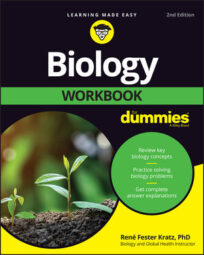Like animals, plants are made of cells and tissues, and those tissues form organs, such as leaves and flowers, that are specialized for different functions. Two basic organ systems exist in plants:
The shoot system, located above ground, helps plants capture energy from the sun for photosynthesis. Organs found within the shoot system include leaves, stems, cones, and flowers.
The root system, located below ground, absorbs water and minerals from the soil. Roots make up the root system.
The structure of each type of plant organ is tailored to match its function:
Leaves capture light and exchange gases with the atmosphere while minimizing water loss.
Many leaves are flattened so they have maximum surface area for light capture.
Tiny holes called stomata in the surfaces of leaves open and close to allow plants to absorb carbon dioxide from the atmosphere and to release oxygen.
Guard cells surround the stomata, ready to close them if water loss from the leaves becomes too great. The surface layer, or epidermis, of a leaf often has a coating of wax to further prevent water loss.
Stems support leaves and reproductive structures and also transport sugars and waters throughout the plant.
Stems contain special types of tissues that give them strength. Woody plants have especially strong stems because they undergo secondary growth to thicken their stems and add layers of strong tissues.
Stems contain tissues that specialize in transport. Xylem transports water from a plant’s roots up to the leaves. Phloem transports sugars from the leaves throughout the plant. Young stems contain little packages of xylem and phloem, called vascular bundles.
In some plants, specialized reproductive structures like flowers and cones produce egg and sperm and may create protective structures around the young embryo. Flower structure also helps with pollination, the distribution of pollen (which contains sperm) to the plant’s female parts.
Stamens are the male parts of flowers. They consist of the anther, which makes pollen, and a thin stalk called a filament. Scientists call the ring of male parts within the flower the androecium (which literally means "man house").
The flower’s female parts are the carpels, which may be joined together to form a pistil. The part of the carpel that catches pollen is the stigma, and the swollen base that contains eggs in ovules is the ovary. Many flowers have an elongated tube, the style, between the stigma and the ovary. Scientists call the ring of female parts within the flower the gynoecium ("woman house").
The pretty parts of flowers are often showy petals, which help attract animals to flowers so they can help distribute pollen. Scientists call the ring of petals in the flower the corolla.
Flowers may also have a ring of green, leaf-like structures called sepals. Sepals help protect the flower when it’s still in the bud. In some flowers, the sepals look just like the petals and help attract pollinators. Scientists call the ring of sepals in the flower the calyx.
After fertilization of the eggs by sperm, the ovules within a flower become seeds, and the ovary becomes a fruit. Seeds protect the embryo, and fruits help scatter the seeds away from the parent plant.
A stalk called the peduncle supports the flower, which may also have a swollen base called the receptacle.
Roots grow through the soil, anchoring the plant and absorbing water and minerals.
A root cap made of protective cells covers the tips of roots to prevent damage as they grow through the soil.
The root’s surface layer, also called an epidermis, contains cells that grow out into the soil, forming thin extensions called root hairs. These root hairs increase the root surface area so that the roots have more contact with the soil, which helps improve the absorption of water and minerals.
Roots contain a core of vascular tissue that carries water away from the roots and toward the shoots and brings sugars from the shoots toward the roots. Some roots, like those of a carrot, specialize in storing extra sugars for later use by the plant.
Based on the types of tissues they have and the reproductive structures they make, plants can be organized into four major groups:
Bryophytes are plants such as mosses that don’t have a vascular system and don’t produce flowers or seeds. Bryophytes also don't have a true root system. Instead, many rely upon delicate anchoring structures called rhizoids.
Ferns and related plants have vascular tissue, but they don’t produce seeds.
Gymnosperms (also known as conifers) have vascular tissue and produce cones and seeds, but they don’t produce flowers.
Angiosperms (or flowering plants) have vascular tissue and produce both flowers and seeds. Scientists divide the most familiar flowering plants into two groups based on the number of cotyledons they contain in their seeds. Cotyledons, sometimes called seed leaves, supply nutrition to the embryo and then emerge as the first leaves begin to grow.
Monocots, like corn and lilies, have seeds that contain one cotyledon.
Dicots, like beans, oak trees, and daisies, have seeds that contain two cotyledons.
In addition to their difference in seed structure, monocots and dicots have distinct patterns in their structures and the way they grow.
This table presents several of the key structural differences between monocots and dicots.
| Feature | Monocots | Dicots |
|---|---|---|
| Cotyledons in seeds | One | Two |
| Bundles of vascular tissue in stem | Scattered throughout | Form definite ring pattern |
| Root system | Fibrous | Tap root |
| Leaf veins | Run parallel | Form a net pattern |
| Flower parts | Are in threes and multiples of threes | Are in fours and fives and multiples of fours and fives |

